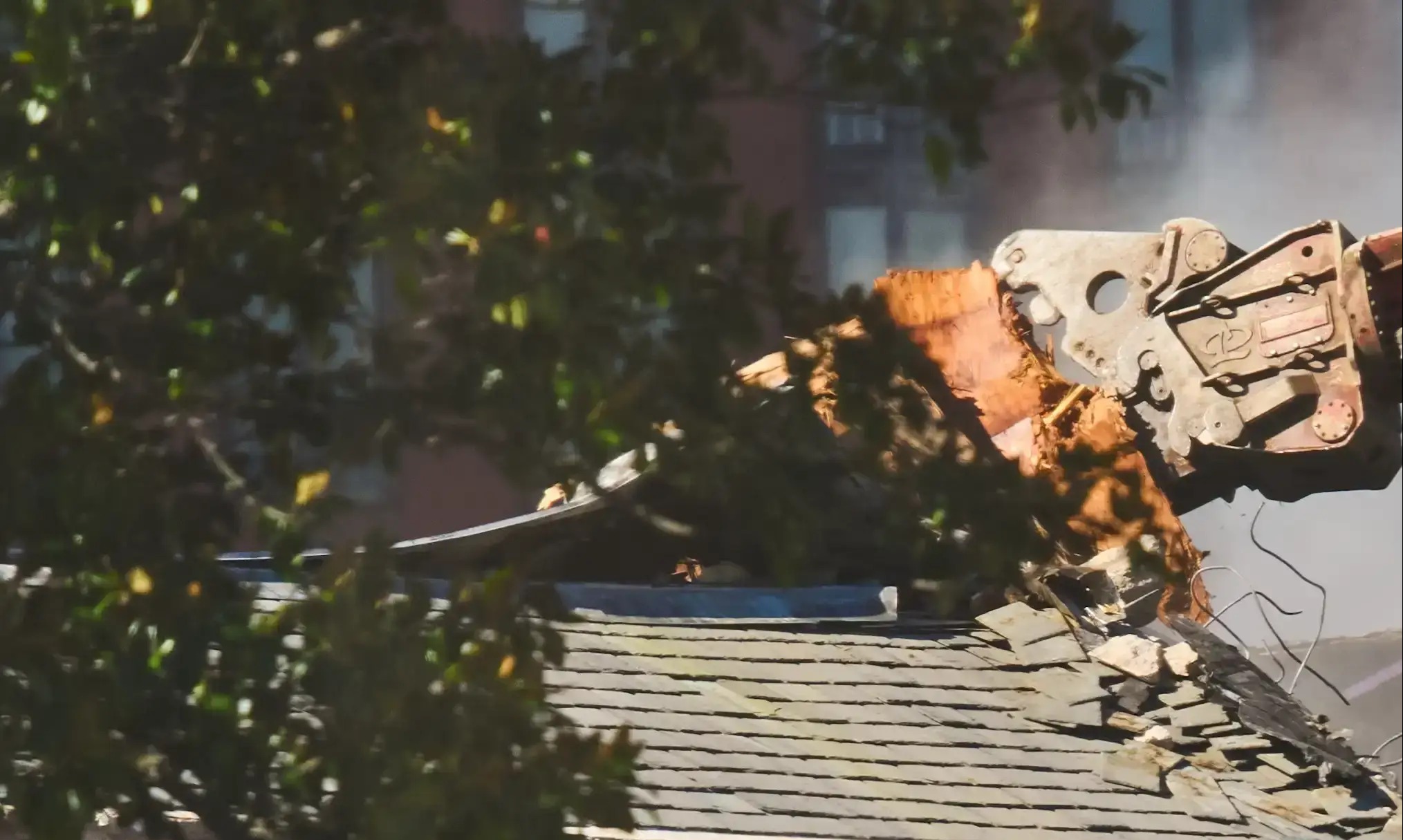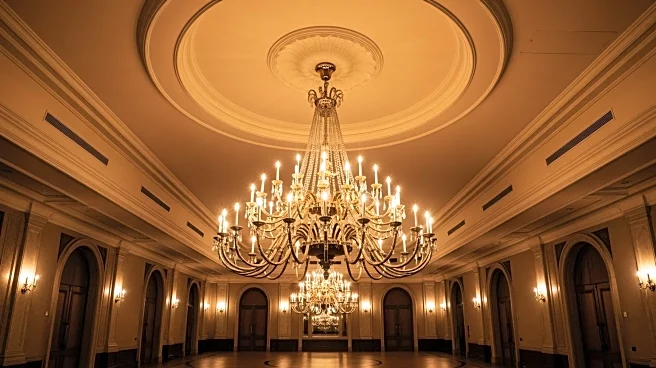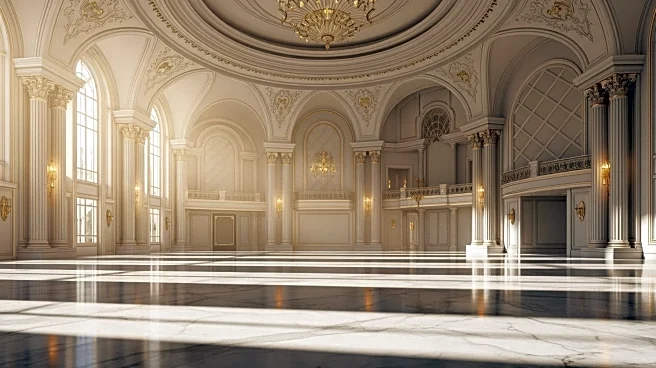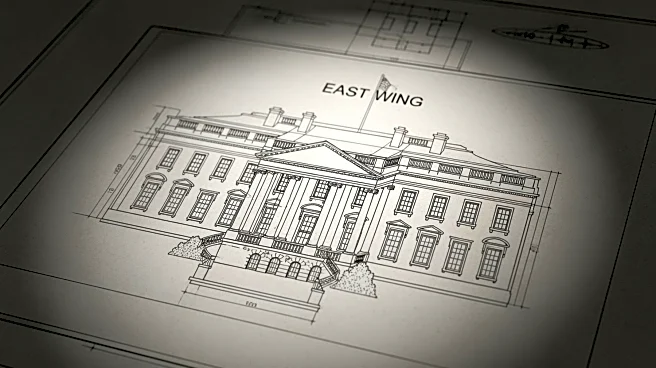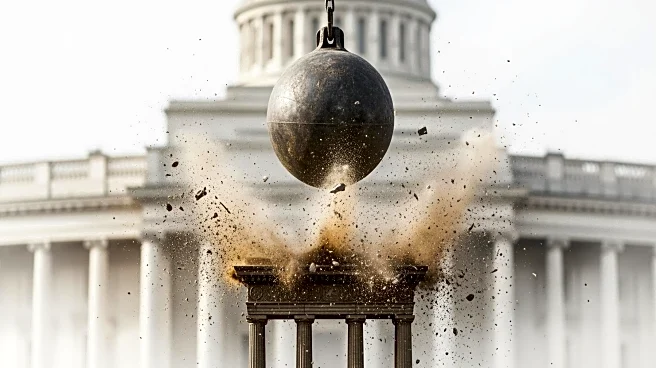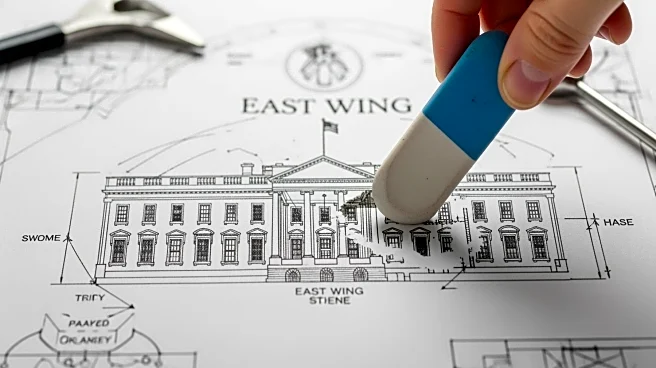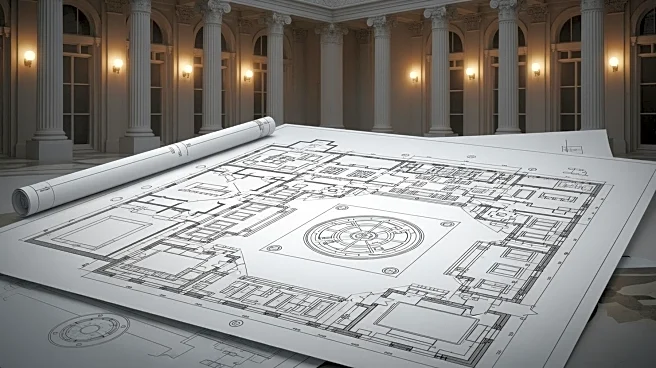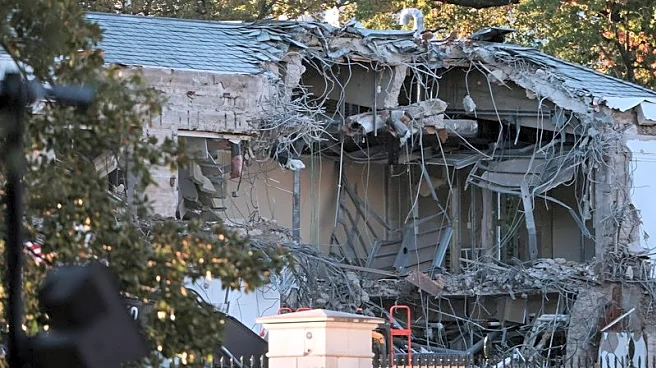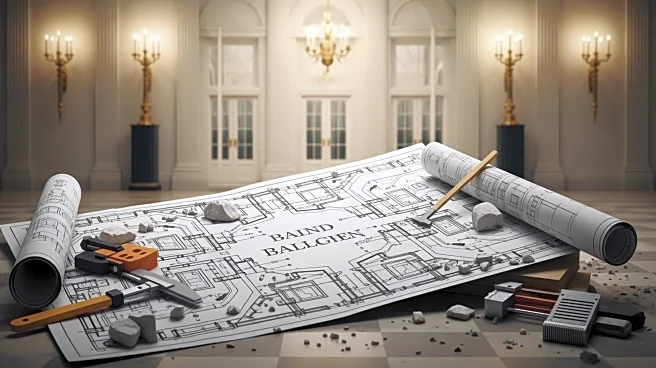What's Happening?
The White House East Wing has been demolished as part of President Trump's plans to construct a new ballroom. Photos released show the demolition reaching close to the main executive mansion, leaving behind
debris and twisted rebar. The East Wing, historically used by first ladies for their offices, and the East Colonnade, which connected the wing to the main building, have been removed. The East Colonnade was a notable entry point for visitors and housed a family movie theater used for presidential screenings. White House press secretary Karoline Leavitt assured the public of transparency in the project, emphasizing that changes in the demolition plans were made following advice from architects and construction companies to ensure a modern and stable structure.
Why It's Important?
The demolition of the East Wing signifies a significant alteration to the White House's historical architecture, impacting its traditional use and visitor experience. The construction of a new ballroom reflects President Trump's vision for modernizing the White House, potentially enhancing its capacity for hosting large events. This development may influence public perception of the administration's priorities, balancing historical preservation with modernization. Stakeholders such as historians, architects, and political analysts may debate the implications of altering a historically significant site, while supporters may view it as a necessary update to accommodate contemporary needs.
What's Next?
As the construction progresses, further updates and changes to the White House's structure may be announced. The administration is expected to continue providing updates on the project's development. Reactions from historical preservationists and the public will likely emerge, potentially influencing future decisions regarding the White House's architectural modifications. The completion of the ballroom could lead to increased hosting capabilities for state functions and events, potentially impacting diplomatic and political engagements.
Beyond the Headlines
The decision to demolish and rebuild parts of the White House raises questions about the balance between preserving historical integrity and adapting to modern requirements. This development may set a precedent for future administrations regarding how they approach changes to national landmarks. The cultural and historical significance of the White House as a symbol of American heritage may be weighed against the practical needs of a functioning government residence.


